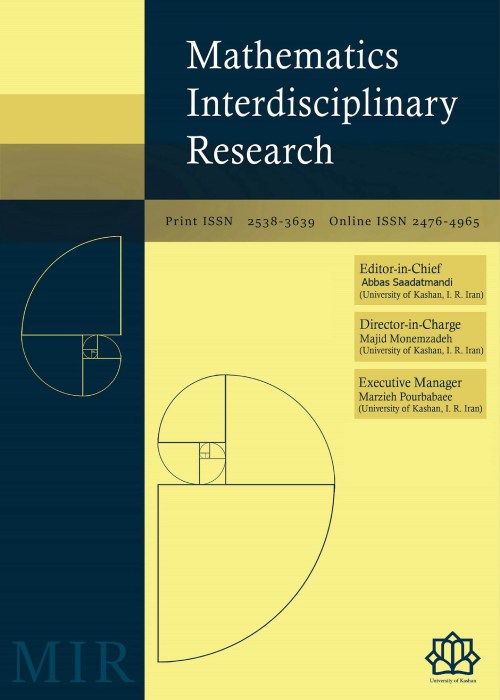فهرست مطالب
Mathematics Interdisciplinary Research
Volume:5 Issue: 3, Summer 2020
- تاریخ انتشار: 1399/09/11
- تعداد عناوین: 6
-
-
Pages 173-192One of Iran's problems in the production of common oil and gas fields is unequal extraction. Therefore, the production of common oil and gas fields in onshore and offshore is essential for Iran, so this must carefully monitor, which can be considered as a game-liked approach, that each player tries to increase its payoff. Therefore, the purpose of this study is to apply game theory in examining Iran's approaches to extracting from common oil fields. For this purpose, the present study seeks to design a mathematical model to optimize the production of Iran against a competitor using a game. Since the proposed model is in the field of mathematical modeling, the research strategy is a case study. Meanwhile, the data-gathering tool is descriptive. The results showed that Iran's equilibrium in Forouzan oil field is cooperation, and the equilibrium of Saudi Arabia is non-cooperation. Finally, the executive policies based on research results presented.Keywords: Game Theory, Common Fields, Oil & Gas, Cooperative Game, Forouzan Oil Filed
-
Pages 193-206Secret sharing is an important issue in cryptography which has many applications. In a secret sharing scheme, a secret is shared by a dealer among several participants in such a way that any authorized subset of participants can recover the secret by pooling their shares. Recently, several schemes based on elliptic curves and bilinear maps have been presented. Some of these schemes need a secure channel, there are restrictions on the number of secrets, or the participants or the dealer are unable to verify the validity of the shares. In this paper, we present a new verifiable $(t, n)$-threshold multi-secret sharing scheme based on elliptic curves and pairings that does not have any of the above restrictions. The hardness of a discrete logarithm problem on elliptic curves guarantees the security of the proposed scheme.Keywords: Secret Sharing Scheme, Elliptic Curves, Pairings, Discrete Logarithm Problem
-
Pages 207-223
In the present paper, we introduce and investigate three interesting superclasses SD, SD* and KD of analytic, normalized and univalent functions in the open unit disk D. For functions belonging to these classes SD, SD* and KD, we derive several properties including (for example) the coefficient bounds and growth theorems. The various results presented here would generalize many well known results. We also get a new univalent criterion and some interesting properties for univalent function,starlike function,convex function and close-to-convex function. Many superclasses which are already studied by various researchers are obtained as special cases of our two new superclasses.
Keywords: Univalent functions, starlike functions, Convex functions, Close-to-convex function -
Pages 225-238In this paper, numerical techniques are presented for solving system of nonlinear integro-differential equations. The method is implemented by applying hybrid of Legendre polynomials and Block-Pulse functions. The operational matrix of integration and the integration of the cross product of two hybrid function vectors are derived in order to transform the system of nonlinear integro-differential equations into a system of algebraic equations. Finally, the accuracy of the method is illustrated through some numerical examples and the corresponding results are presented.Keywords: Integro-differential equations, Hybrid functions, Block-Pulse functions, Legendre polynomials, operational matrix
-
Pages 239-257The Gireh is an Islamic geometric pattern which is governed by mathematical rules and conforms to Euclidean surfaces with fixed densities. Since dome-shaped surfaces do not have a fixed density, it is difficult to make use of a structure like Gireh on these surfaces. There are, however, multiple domes which have been covered using Gireh, which can certainly be thought of a remarkable achievement by past architects. The aim of this paper is to discover and classify the strategies employed to spread the Gireh over dome surfaces found in Iran. The result of this research can provide new insights into how Iranian architects of the past were able to extend the use of the Gireh from flat surfaces to dome-shaped elements. The result of this paper reveal that the projection of Gireh on dome surface is based on the following six strategies: 1- Spherical solids, 2- radial gore segments, 3- articulation, 4- changing Gireh without articulating, 5- changing the number of Points in the Gireh based on numerical sequences, and 6- hybrid. Except for the first method, all of the other strategies have been discovered in this study. The radial gore segments strategy is different from the previously-developed methods.Keywords: Islamic mathematics, Geometry, Gireh, domical surface, pattern projection
-
Pages 259-277
Let G=(V,E) be a finite and simple graph of order n and maximum degree Δ(G). A strong Roman dominating function on a graph G is a function f:V (G)→{0, 1,… ,lceil Δ(G)/2 rceil+ 1} satisfying the condition that every vertex v for which f(v)=0 is adjacent to at least one vertex u for which f(u) ≤ 1+ lceil frac{1}{2}| N(u) ∩ V0| rceil, where V0={v ∊ V | f(v)=0}. The minimum of the values sumv∊ V f(v), taken over all strong Roman dominating functions f of G, is called the strong Roman domination number of G and is denoted by γStR(G). In this paper we continue the study of strong Roman domination number in graphs. In particular, we present some sharp bounds for γStR(G) and we determine the strong Roman domination number of some graphs.
Keywords: Domination, Roman domination, Roman domination number, strong Roman domination


